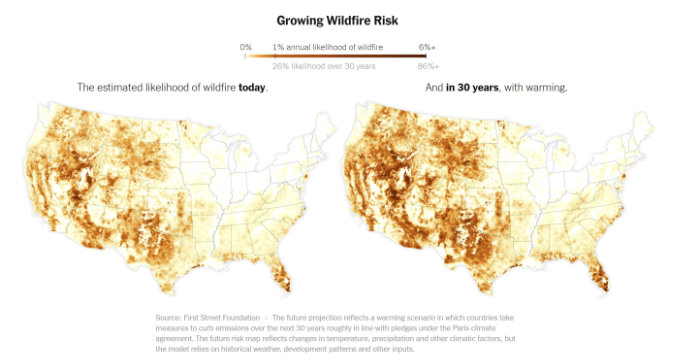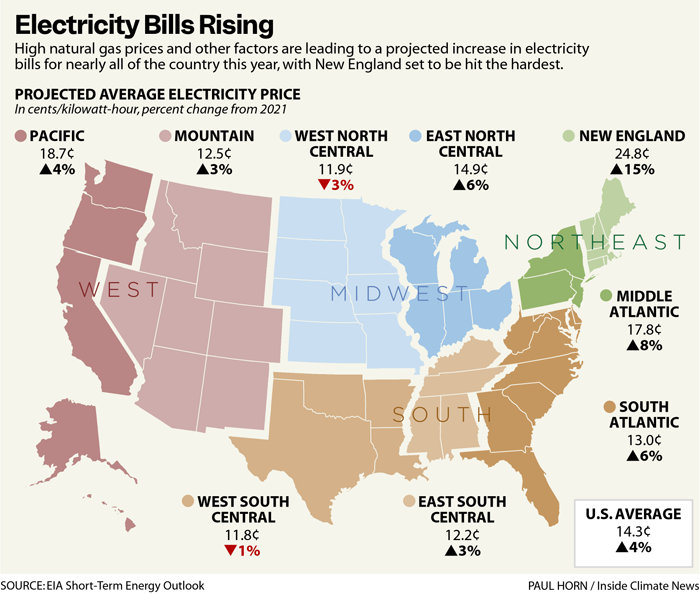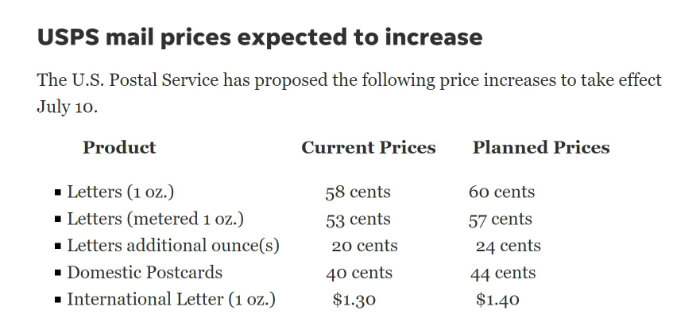Hot weather caused a blackout in Texas. California and the Midwest will also struggle this summer
Record temperatures (i.e. too hot, too early–can you see the pattern yet?) in the 90s and 100s caused six Texas power plants to trip offline, which resulted in 2,900 MW lost. FYI one megawatt of electricity is enough to power about 200 homes on a hot day, so the 2,900 MW were enough to power about 580,000 homes. ERCOT urged residents (including bitcoin miners), to set their thermostats to 78 degrees or above and avoid using large appliances during peak hours between 3-8 pm throughout the weekend. Tesla pushed notifications to their cars alerting its customers of potential grid disruptions and urging them to recharge their cars during off-peak times. Here is a really good, non-technical thread explaining why Texas’ grid is failing, why it keeps failing, and what you can do about it, including storing non-perishable food and water, using the dishwasher at night, and turning on your thermostat and closing your blinds during the day:
🚨🚨 The Texas electric grid can barely keep the lights on and it’s not even hot yet. We’re on the verge of a full energy crisis. Here’s why: 🧵
— michael lee (@The_Michael_Lee) May 14, 2022
California’s and the Midwest’s grid operators have already announced that they will be unable to cover peak load during the summer months.
How can you prepare for a blackout:
- Store enough water, and non-perishable food that does not need heating. We usually recommend 15 days’ worth as a baseline, which would carry you through several short blackouts (or a longer one).
- Learn how to deal with severe heat in case your AC is out.
- Identify the most important appliances or electrical items you cannot afford to lose so you can understand what you need to keep them powered when the actual power is out. Fridge/freezers are a no-brainer, but maybe you use a PAP machine or other medical equipment, etc. Don’t forget about phones and laptops.
- Phone = small power bank (+ portable solar panel). I’ve put the solar panel in brackets because, in theory, a fully charged bank could carry you over a couple of days on its own. If the blackouts are intermittent, you should be able to recharge the power bank in between. But if you add the solar charger, then you don’t have that worry anymore. A small power bank and solar panel are also perfect to keep in your go-bag, travel bag, etc so you’d kill more than two birds with one stone.
- PAP machine or a laptop = bigger battery + solar panel. Something like this. This type of combo is a nice sweet spot to be able to have a lot more power, while still being portable. Either the whole combo or just the battery is perfect for camping, as an example.
- A fridge/larger appliance. A fridge/freezer might keep cold without power for long, especially if it’s filled, and it’s kept closed. But if you don’t want to risk it, a backup generator is the way to go.
- These are just some broad suggestions, please remember to check your specific appliance’s energy consumption before you buy a battery or generator. FWIW our guides usually do a good job at helping figure these things out.
- And don’t forget that kids, pets, the elderly, or a physical illness or limitations will need a lot more planning. So start preparing now.
More resources:
- If you’re looking at going off-grid, or just want to understand better your options, here is our simple off-grid power 101 guide which has also links to the best power banks, portable solar panels, rechargeable batteries, etc.
- And here is our gas-powered generators review, which also helps you understand how they work and if they are right for you.
- For quick picks, here’s how to prepare for blackouts on a budget, and here is how to prepare for a 3-day blackout for under $100.
Climate and extreme weather
A new tool helps you identify your home’s wildfire risk factors now and 30 years into the future. Wildfire risks are becoming widespread, severe, and accelerating rapidly while rising housing prices in cities and suburbs push Americans to live in more fire-prone areas with little awareness of the local risks. Homeowners need these types of tools to help make better choices.

A new UN report shows that roughly 2.3 billion people—one-third of the world population—are facing water scarcity, and that number is expected to double by 2050. The frequency and duration of droughts will keep increasing due to climate change. Africa is the hardest hit, but the Americas, India, and Australia are also affected.
The World Weather Attribution group shows that global warming made South Africa’s floods twice as likely and that extreme downpours will be 4-8% heavier than if global warming had not occurred.
Deaths from storm surges have dropped, but flooding is now the deadliest hazard. As an example, the majority of deaths from Hurricane Ida were caused by drowning and flash flooding. For this reason, the National Hurricane Center is working on increasing its lead time by 12 hours for 2023.
And, last but not least, a new study from NOAA shows that less air pollution in Europe and North America is creating more hurricanes in the North Atlantic. Similarly, increasing pollution from India and China had the opposite effect, reducing hurricane activity in the Western North Pacific.
Economy and supply chain
US electricity prices going up 4%. The Energy Information Administration said that the national average electricity price for households is on track to rise 4% since 2021, the largest increase since 2008. The cause of price increase is linked to the prices of natural gas which is one of the main forms of energy for power plants:

USPS will increase stamp prices in July. As an example, the cost of a Forever stamp will go from 58 cents to 60. Prices will keep rising “at an uncomfortable rate” until the agency becomes self-sufficient:

Plane tickets, hotels, and summer camps are going to be expensive this year. Airline fares rose 13% since last year and hotel prices by 40%. Summer camp costs are also expected to rise. Travel demand is high and the chief executive of Star Alliance hopes that “customers will tolerate [increasing prices] for a long time,” while airlines pass high fuel and labor costs to the customers.
Opinion: To control inflation, we must address climate change. Sure, inflation is caused by a myriad of factors, from a disruption in the supply chain caused by Covid and the ongoing shutdowns in China, to the war in Ukraine, to plain old corporate greed, but droughts, floods, and other extreme weather events interfere with the ability to grow crops, to process them, or to get those things to market. Climate change is also creating a need for a lot of spending that would otherwise be unnecessary to mitigate the effects of rising sea levels, extreme storms, etc.
Abbott’s baby formula could hit the shelves end of July at the earliest. The FDA allowed Abbott to resume production of their baby formulas. Abbott confirmed that they could restart production within the next two weeks, but they didn’t give an exact date. Products would hit the shelves six to eight weeks after the start of production. Perrigo, who makes store-brand formulas for Amazon and Walmart, said that they are working round the clock to meet demands, but expect shortages to last for the “balance of the year.”
India banned wheat exports. Now the EU is looking to the US in a newly improved transatlantic bond to come up with a way to deal with this and other possible export bans.
The rest
Finland confirmed it will apply to NATO. Sweden is expected to follow suit. Here are some ways Russia could react to it.
FEMA will no longer require disaster survivors living on inherited land to prove they own their homes. The change follows a July report that detailed how FEMA was regularly denying help to Black families living on land passed down a generation after slavery. The new guidelines will apply retroactively to Aug. 23, to cover damages from Ida and flooding in Tennessee only.
Who had ‘jumping worms’ in their 2022 bingo card? Unfortunately, as cute as they sound (no they don’t), it seems that these fellas are too hungry and gobble up everything in their path, leaving soil less productive. The worms have been in the Americas for a long time, but it is only recently that they’ve become more of a problem. Here are some ways to deal with them (according to this article):
- When buying plants at a sale or trading with neighbors, wash the plants of garden soil. Buy or trade plants bare-rooted or repot in a sterile potting medium.
- Jumping worm cocoons are also in mulch. Purchase mulch from a reputable producer and make sure it’s been heated to 130 degrees F for at least 3 days.
A computer powered by a colony of blue-green algae has run continuously for six months using photosynthesis. Similar technology could soon power up our phones or other small devices.
Here’s an interview with a Ukrainian prepper. A lot of Ukrainians started preparing right after Crimea when they realized that no one will help them, but themselves. It was interesting to read how power banks are important due frequent power cuts.

You are reporting the comment """ by on